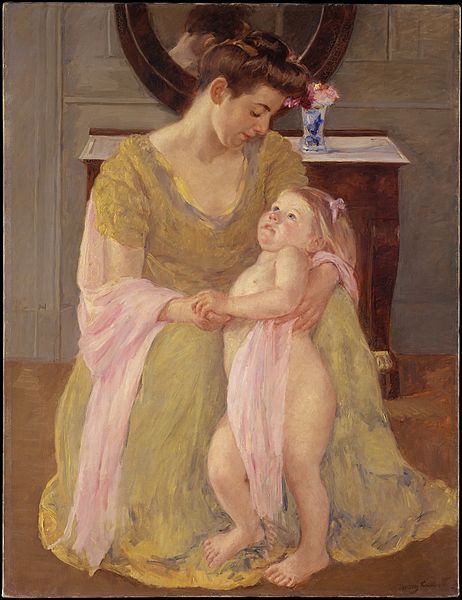I commend to your attention Nadya Williams’s outstanding new book, Mothers, Children, and the Body Politic: Ancient Christianity and the Recovery of Human Dignity. There are many things to say about this excellent work. Front Porch has published a full review here. I wish to focus on one notable element of the book: its commitment to narrative.
The concept of narrative is not overtly developed in the book, but it is pervasive throughout. For one thing, Williams deftly uses various stories and narratives to illustrate her main thesis, namely the manner in which Christianity defends the dignity of all, especially women, children, and those deemed “useless.” Williams extracts great meaning from stories such as the Iliad, the myth of Pandora, the plays of Sophocles and Euripides, Marilyn Robinson’s Gilead, Wendell Berry’s Hannah Coulter, and the stories of Christians such as Saints Augustine, Perpetua, and Felicity. As well as effectively illuminating the book’s arguments, the use of various narratives contributes to the book’s readability.
I wish to make a broader point about narrative, however. At one point, Williams, drawing from Amy Julia Becker, wishes to defend the value of “useless people.” Such people include the elderly, the sick, and, specific to the point Williams and Becker wish to make, the disabled, including those like Becker’s daughter who has Down Syndrome. Such people may not be useful, but they are valuable. This is much like story itself. The liberal arts are often distinguished from what are called the servile arts. While the word “servile” is a bit loaded in our day, here it simply means an art or practice that aims at getting us something useful. We might substitute the less provocative term “practical” for servile. The liberal arts, however, are pursued because they are good in and of themselves. If the city comes into being for the sake of mere life but has as its end the good life, as Aristotle argues, then we can make a similar distinction regarding these two arts: the practical arts exist for the sake of mere life, and the liberal arts for the good life. We might say that liberal education helps us not to live, but to live well. Story and narrative, what we sometimes call the humanities, are not the whole of the liberal arts, but they do seem to be at the core. Liberal education is like people: valuable even when it is useless.
Williams’s book, then, is itself a kind of story. Let us think of how story relates to the themes of family, marriage, motherhood, children, and human dignity. Consider the classic Disney fairytales, which draw upon even more venerable stories. Films such as Snow White, Sleeping Beauty, and Cinderella, follow a particular narrative arc. There is much going on in those stories, but one cannot help but notice that each story ends in a marriage. There is something embedded in these stories that suggests that life should be pointed toward marriage and children. While I share J.R.R. Tolkien’s conviction that fairy stories are not simply children’s tales, children do find them particularly captivating. These fairy stories, solidified in our popular culture by Disney, tell children that they should transcend childhood and aim at an adulthood defined by the commitments of marriage and children.
Contrast this with modern Disney and Pixar films. The most popular of these films is Frozen. The prince in Frozen turns out to be a jerk, and while there is some romance between the characters of Kristoff and Anna, there is no marriage (at least not until Frozen 2, and then essentially as an afterthought). The same is true in Pixar’s Brave, in which the female protagonist’s rejection of marriage is central to the plot. The notion of submitting to obligations of family life at the expense of individual autonomy is the central narrative of classic fairy tales, while ignored or undermined by contemporary film fairy tales. The lesson to children is clear: marriage and children are optional, to be put in second place behind some notion of personal fulfillment. Family becomes a matter of consumer choice rather than part of a story of noble, loving sacrifice. It is no accident, then, that when marriage and children no longer serve our individualist narratives, they are easily discarded.
Williams discusses the matter of surrogacy and designer babies at some length. This, too, relates to story. Williams contemplates such tales as the myth of Pygmalion and the novels Frankenstein and Brave New World as a way of imaginatively exploring the desire to control. In each of these accounts, human beings turn the creation of new human life into an act of will rather than an act of love. While it can be claimed that Pygmalion loves Galatea, Williams notes Galatea is really Pygmalion’s creation, designed to meet his demands. Galatea is made, not begotten. Pygmalion is even spared the problem of in-laws, as Williams humorously observes.
One cannot help but notice in these stories of designer humans the absence of at least one parent. It might be said that Galatea has a father (incestuously, as this is also her eventual husband), but she has no mother. The same is true of Frankenstein’s monster. In Huxley’s Brave New World, it is not clear that any parents are involved in the creation of new life, as it is all done in factories. Motherhood is especially despised in Huxley’s dystopia, the word “mother” being a kind of vulgarity that is as shocking as today someone calling you a….well, this is a family website so you will just have to investigate those words on your own.
Williams doesn’t mention this, but we should also consider the stories of Flannery O’Connor and recognize how many of them feature absent fathers or husbands. Where are the men in stories such as “The Life You Save May Be Your Own,” “A Stroke of Good Fortune,” “A Circle in the Fire,” “Good Country People,” “Everything That Rises Must Converge,” “The Enduring Chill,” and “The Comforts of Home”? In O’Connor’s fiction an absent father is often indicative of the absent Father. There is something in the modern soul where a rejection of family resonates with our rejection of God. With that rejection comes the notion that we ourselves can be God and make of the world, including other people, what we will. Family teaches us to be patient with people whom we love but sometimes drive us crazy. As Williams points out, designer children can be thought of like other designed products, subject to Marie Kondo’s principle of simplicity: “does this spark joy?” No person brings us joy all the time. By Kondo’s method, if it doesn’t spark joy, get rid of it.
As we have lost the narrative of entering into marriage and children as an act of selfless love, it has been replaced with a narrative of power. Marriage and children are now an act of will, meant to conform to our own desires. Left out of this narrative are the “useless people,” in this case particularly the children who don’t quite measure up. Just as the ancient world practiced exposure for children who were imperfect, inconvenient, and unwanted, so we do with our own children via abortion. Most provocatively, Williams implies that modern education exists in part to get parents away from their children. She notes the Christmas tune “It’s Beginning To Look A Lot Like Christmas” includes the line “mom and dad can hardly wait for school to start again.” School is for getting kids out of the house so parents can do what they want to do, namely go to work and make money.
School is itself a narrative. In what I found to be the most convicting passage of the book, Williams notes that schools virtually always brag about alumni who have made lots of money or acquired some sort of fame. They never honor the former student who serves as a missionary, “volunteering or serving somewhere remote and unglamorous.” Which school would give an honorary degree or induct into its hall of fame a graduate who is “just” a really good mother and wife? I think of when my own school asks for examples of model alumni. My mind always turns to students who have achieved some level of professional success. I never consider the former students I know whose lives are modest but happy. Did we not also educate those students well? Do they not bring honor to our institutions? We in education (and parenthood) are to be reminded that our goal is not to produce graduates who are merely productive—although we should want at least that—but good people. We’ve bought too easily into the narrative of productivity and usefulness, not the narrative of value and human dignity.
Central to the Christian narrative is the special value given to the weak and vulnerable. This, Williams teaches us, is the radical implication of the imago dei. If we are all in the image of God, then everyone deserves our love and consideration. The Christian notion represents a dramatic departure from the ancient narrative in which the strong rule over the weak. Williams draws our attention to Jesus’s relationship to the family of Martha, Mary, and Lazarus. This family, Williams contends, was likely on the margins of life in the town of Bethany. As three unmarried adults, they confounded the standards of the age. There is a “hint of scandal” around Mary, perhaps from a broken engagement. While we are typically told of men’s occupations in the Gospels, Lazarus appears to have none, perhaps due to an illness that ends up killing him. Yet Jesus befriends them. When Lazarus dies, we get the shortest verse in the Bible: “Jesus wept.”
This weeping takes on special meaning given the values of the ancient world. As David Bentley Harts notes regarding the tears shed by Peter after his third denial of Christ, in the ancient world, “the grief of a man of Peter’s class might have had a place in comic literature; the querulous complaints of an indolent slave, the self-pitying expostulations of a witless peon, the anguished laments of a cuckold taverner, and so on.” Jesus’s status is not much higher than Peter, being a mere carpenter. In the pagan world, the strong had contempt for the tears of people like Jesus, certainly tears over the death of someone like Lazarus. But in the Christian story, it is especially the weak who deserve our tears.
All Christians fail to live out the narrative of Christian love. We fail every day to see the image of God in various people. We find it with ease in the people we find pleasing and useful. We turn a blind eye to those for whom acting on the image will require special effort. Still, it is a powerful narrative. In U.S. v. Virginia, Antonin Scalia, after citing the “Code of the Gentleman” that once guided the Virginia Military Institute, opined that he was not sure if the men of VMI actually lived by such a code, “But it is powerfully impressive that a public institution of higher education still in existence sought to have them do so.” So too with Christianity.
What happens when that ethos decays? This is Williams’s concern. As the title of her book indicates, she is particularly concerned about children and mothers, often considered among the “useless ones” throughout history. I share that concern. I also worry about the men. The logical outcome of the return to paganism is Andrew Tate: crude, self-indulgent, domineering, avaricious, misogynistic, contemptuous of the weak. People exist only to be used for our own pleasure. Williams reminds us of a lesson that we should have already learned good and hard, namely that rejection of Christianity does not result in blissful liberation and self-expression. It more likely devolves into cruelty and despair.
Christianity tells a different story, all the more powerful because it is true. There is a God who loves us. He loves us so much that he came among us, taught us that each of us is precious in his eyes, and he was willing to die so that we might have eternal life. His commandment to us is that we love him and love each other. We must strive to see and honor the image of God in every human being. “This is my commandment, That ye love one another, as I have loved you. Greater love hath no man than this, that a man lay down his life for his friends.” That is good news indeed.
Image Credit: Mary Cassatt, “Mother and Child with a Rose Scarf” (1908) via Wikimedia Commons




